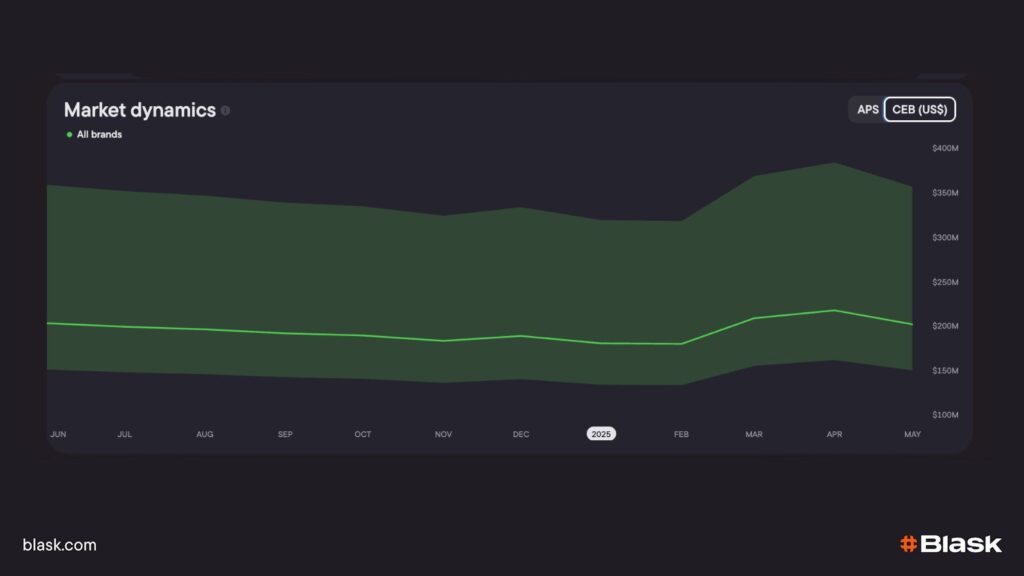
From ledger books to laser-fast algorithms
In iGaming, numbers aren’t decoration — they’re oxygen.
Back when the sector was young, operators handled that oxygen by hand: CSV exports, pivot-table marathons, and ad-hoc surveys that caught a snapshot of player behaviour weeks after it changed.
“The industry has always run on data,” one veteran COO told us, “but the early process was 90 % grit, 10 % insight — and 100 % error-prone.”
Those grassroots tactics built the first loyalty programmes and VIP clubs, yet they buckled when smartphone betting, affiliate traffic, and live-odds trading blew the market wide open.
Suddenly, hours mattered — and spreadsheets don’t run in real time.
AI arrives — and flips the script.
Artificial intelligence didn’t just speed things up; it changed the very question we ask of data.
Instead of “What happened?” we now ask “What will happen next… and why?”
Blask’s co-founder, Max Tesla, frames it like this:
“Operators aren’t short of data; they’re drowning in it. The winners will be the ones who turn that flood into foresight in seconds, not quarters.”
Blask’s own stack ingests public search signals, device telemetry, and competitive movements every hour, then pushes a ranked “battle table” of all brands live in each market.
🔗 Read more: What is Blask and how to use it to navigate through iGaming industry.
A job that once blocked analysts for two weeks now runs while you fetch coffee.
Where AI flat-out beats manual methods.
| AI advantage | Real-world lift (Blask & industry data) |
|---|---|
| Raw speed | Fraud-detection latency ↓60 %; churn risk scored in milliseconds. |
| Hyper-personalisation | Retention ↑39 % when bet builders & promos adapt to each session. |
| 24/7 fraud shields | Payment fraud ↓48 % via pattern-recognition models. |
| Effortless scale | Launch in a new GEO without adding headcount — data pipelines auto-expand. |
| Hour-by-hour market vision | Blask Index refreshes every 60 min, exposing brand surges or dips before rivals notice. |
🔗 Deep dive: See how Blask Index quantifies market volume with 95 % accuracy.
Why some teams still swear by manual work.
- Human nuance — A seasoned analyst may see cultural cues an algorithm hasn’t been trained on yet (for example, a local holiday that skews deposit patterns).
- Edge-case sanity-checks — Brand-new markets or regulatory twists sometimes sit outside a model’s historical range; manual oversight prevents over-confident misreads.
- Ethical governance — Humans provide the moral throttle-hold when AI gets too pushy with personal data.
The flip side — shortcomings of each camp
AI pitfalls
- Garbage in, garbage out: dirty logs can warp predictions.
- Not cheap (yet) to build from scratch — though off-the-shelf SaaS like Blask slashes CAPEX.
- Empathy gaps: algorithms don’t do cultural nuance unless humans teach them.
Manual pain points
- Takes days, sometimes weeks.
- Fat-finger errors accumulate.
- Zero chance of scaling when player counts 10×.
The hybrid model: best of brains + bytes
Smart operators pair AI’s tireless crunching with human storytelling:
- Let algorithms scan billions of rows, score risk, project revenue.
- Task analysts to ask why: connect spikes to big-match sponsorships, payment glitches, or social trends.
- Loop feedback into the model — AI learns, accuracy climbs, compliance stays tight.
Max Tesla calls this “augmented intuition.” The machine surfaces anomalies; the human decides the strategic move.
Tomorrow’s battlefield: real-time or bust.
Research house IDC pegs the global AI market at $930 billion by 2028. Within iGaming, three trends will separate leaders from laggards:
- Instant personalisation — odds boosts, bet suggestions, and RG nudges tuned to the micro-moment.
- Predict-then-prevent RG tools — early-warning scores lock risky accounts before harm, satisfying tougher regulators.
- Market-wide transparency — platforms like Blask revealing every brand’s APS (Acquisition Power Score) and CEB (Competitive Earning Baseline) in public dash-boards — making secrecy obsolete.

Final whistle
The question is no longer “AI or manual?” but “How quickly can we blend both?”
Speed, scope, and predictive precision are AI’s home turf. Context, creativity, and ethical judgement remain human.Master the mix, and you’ll convert data from static cost-centre into the most lethal weapon in iGaming’s competitive arsenal.
“In the data duel, the side with the sharper insight wins. AI loads the chamber; people pull the trigger.” — Max Tesla, Blask

